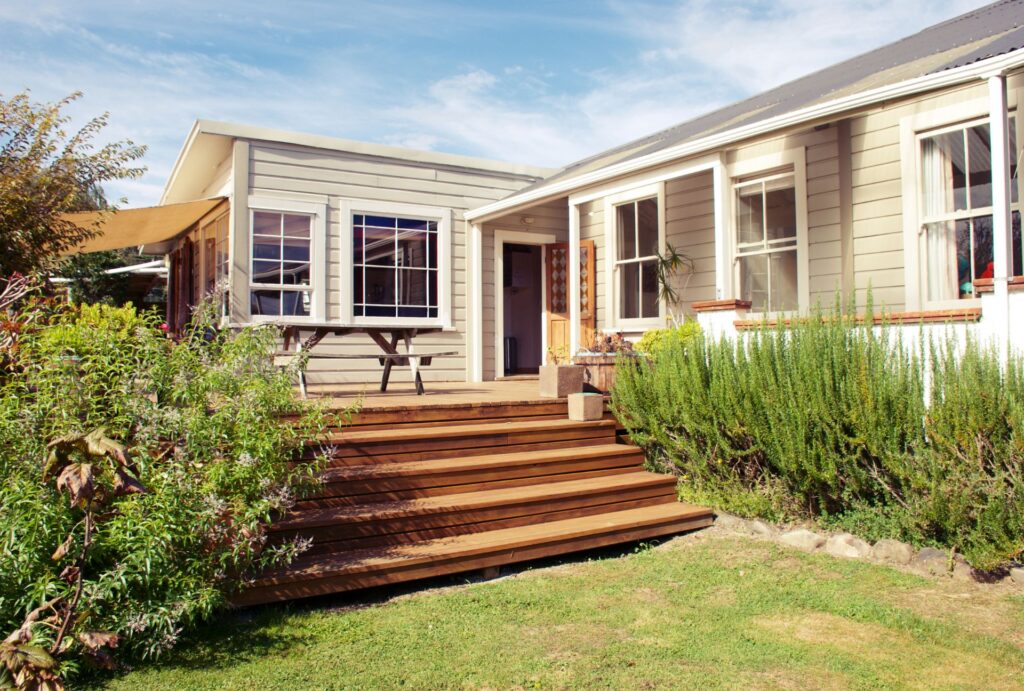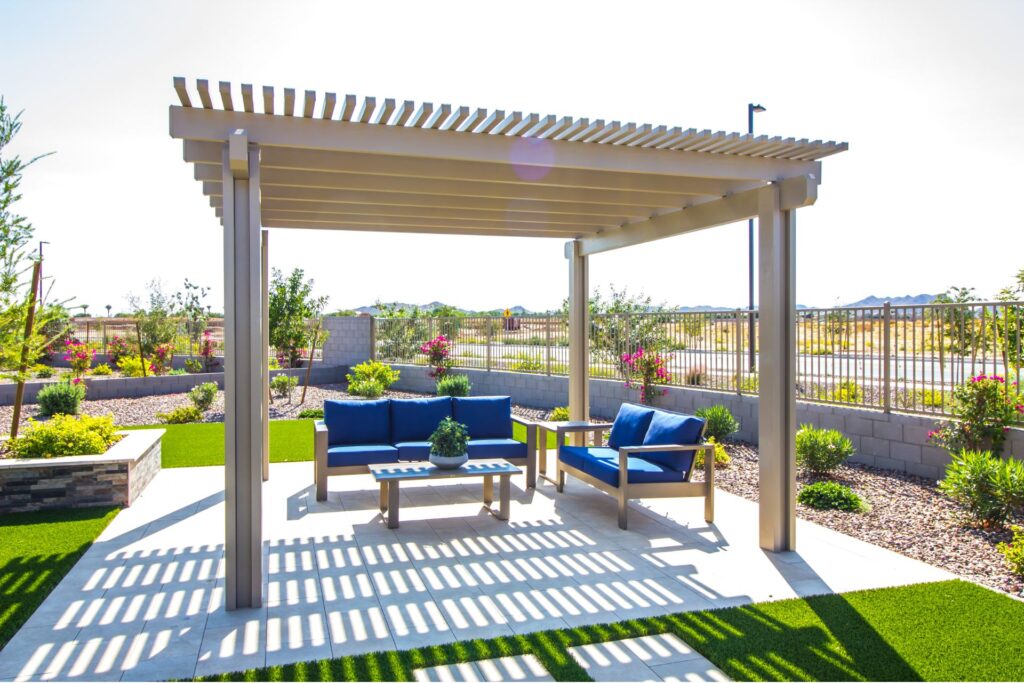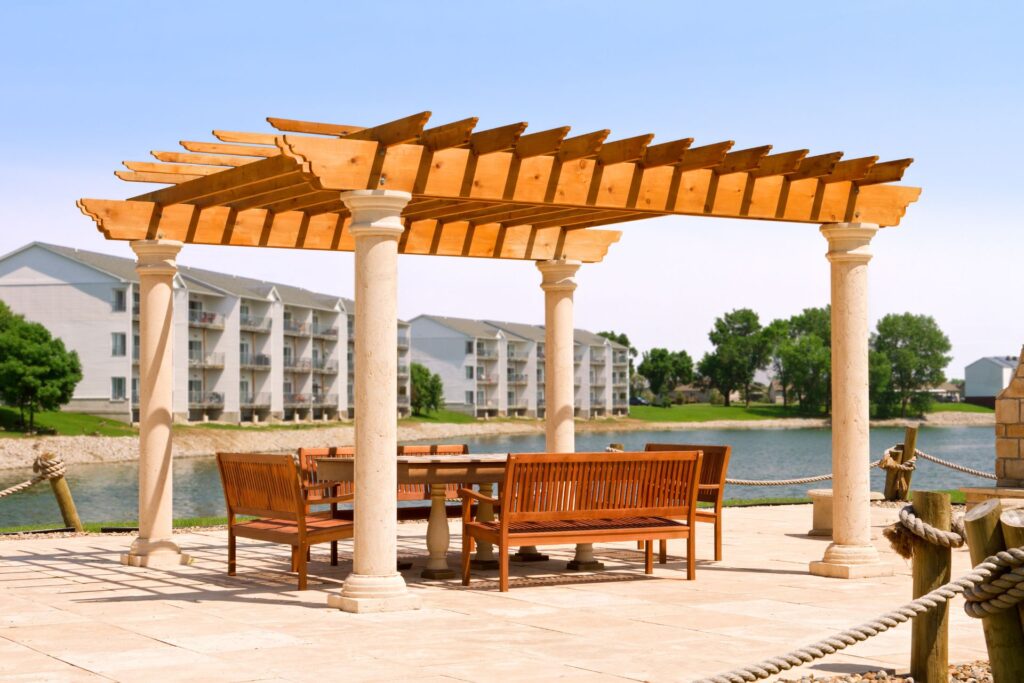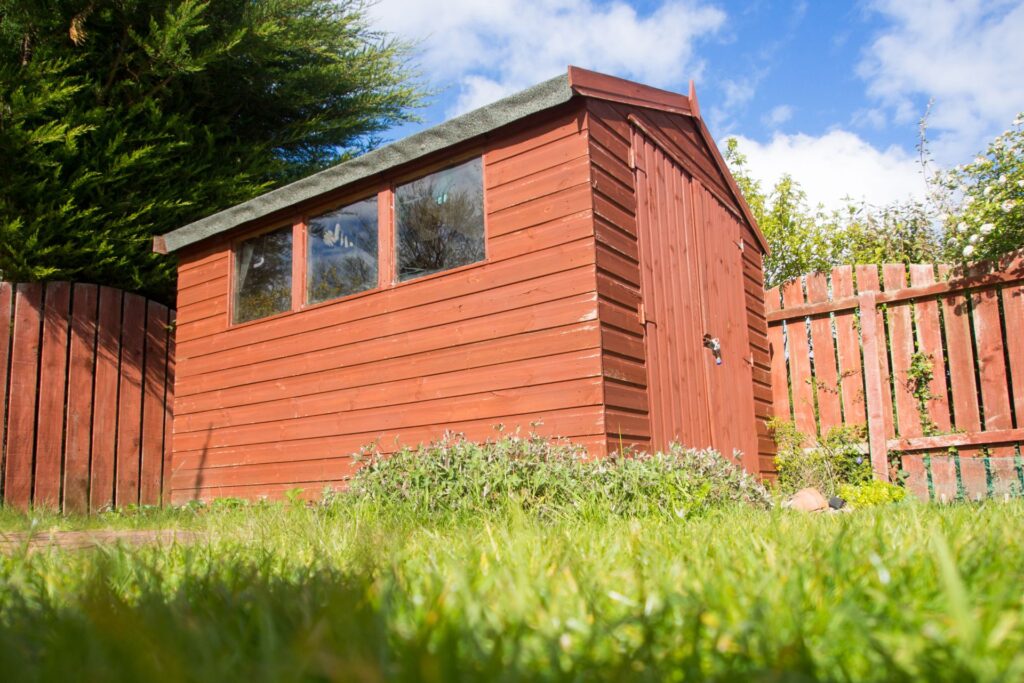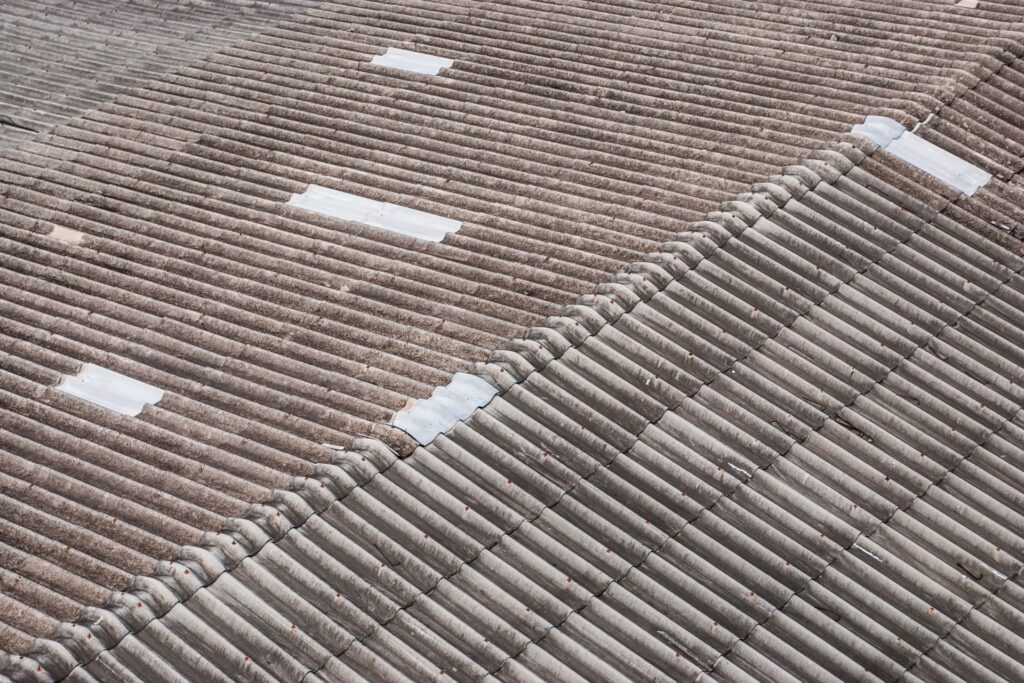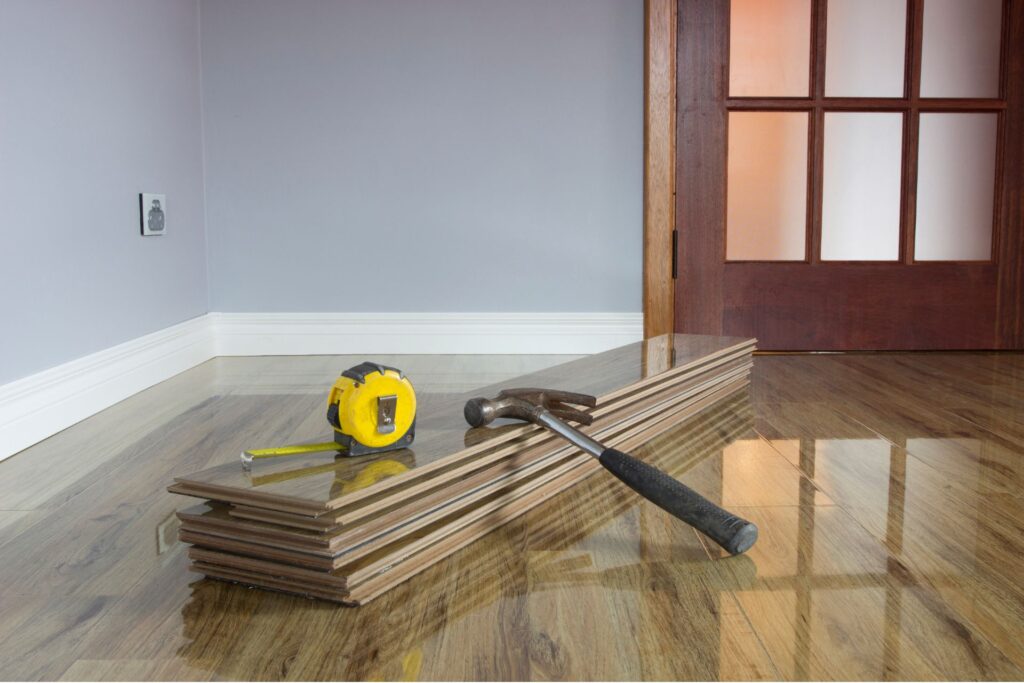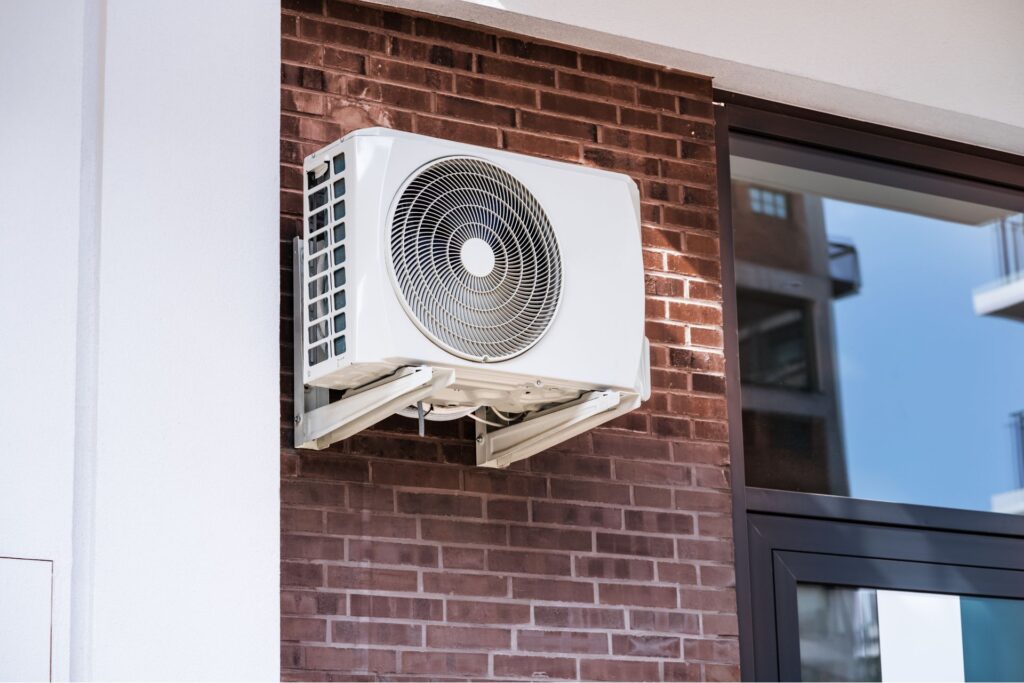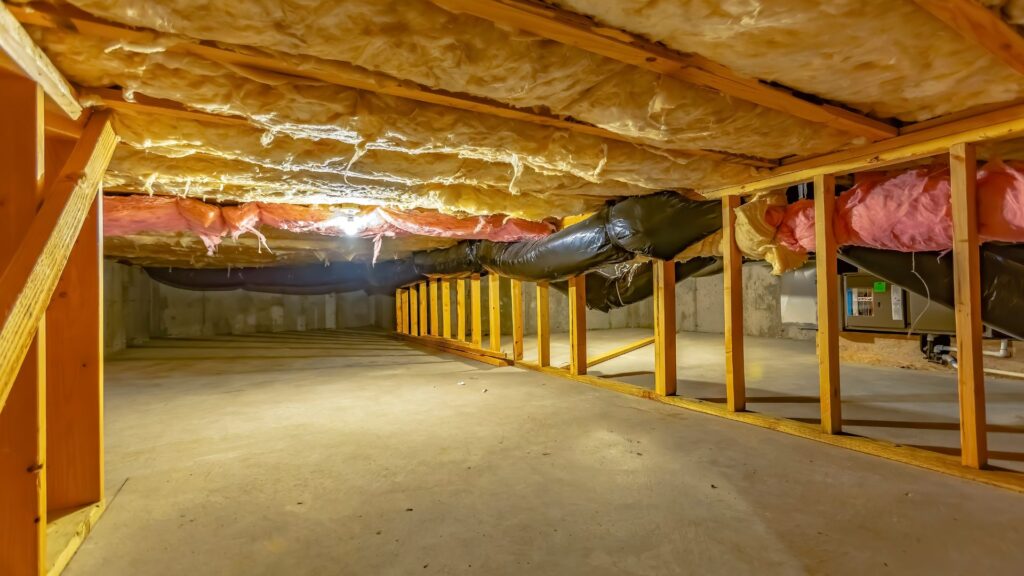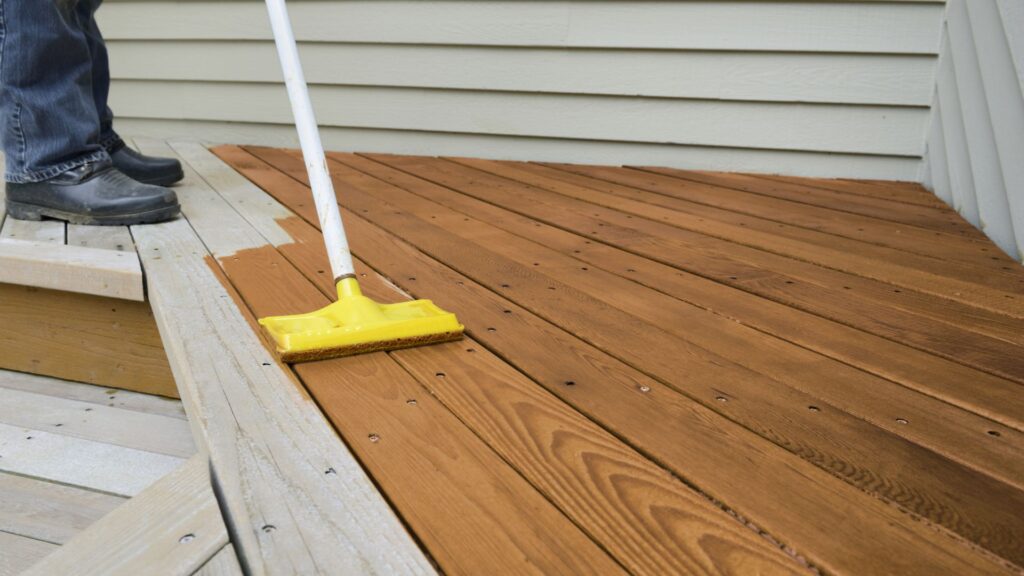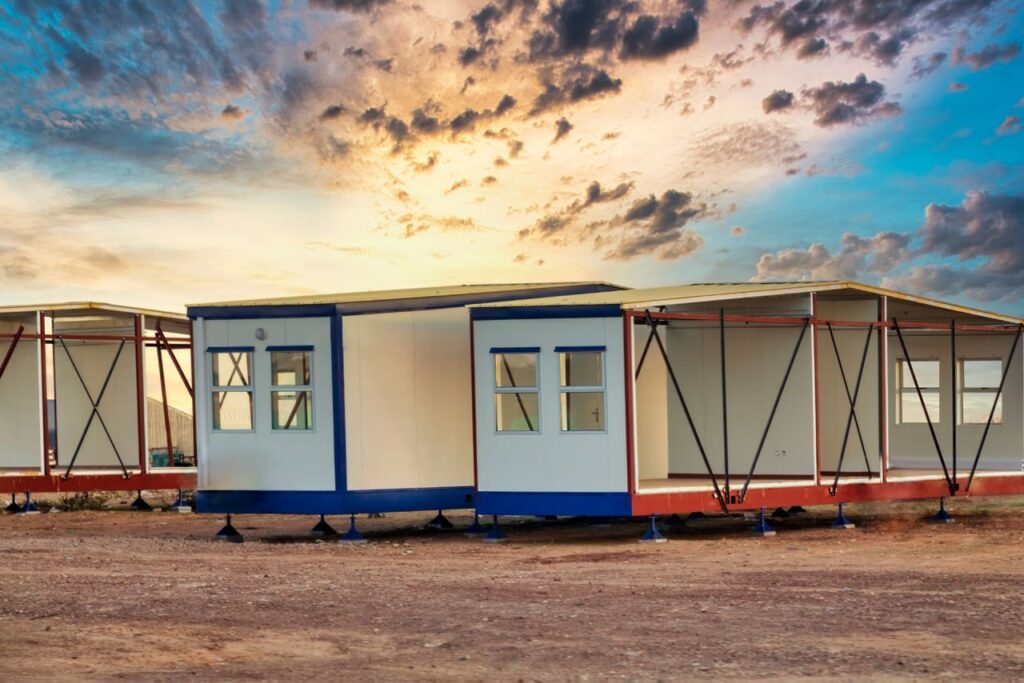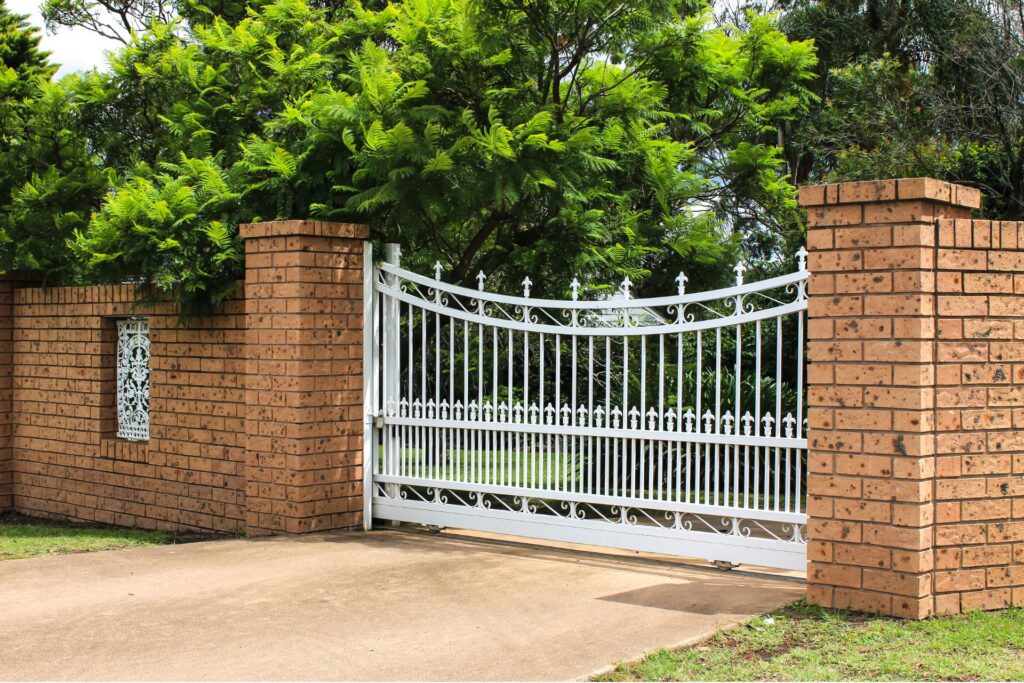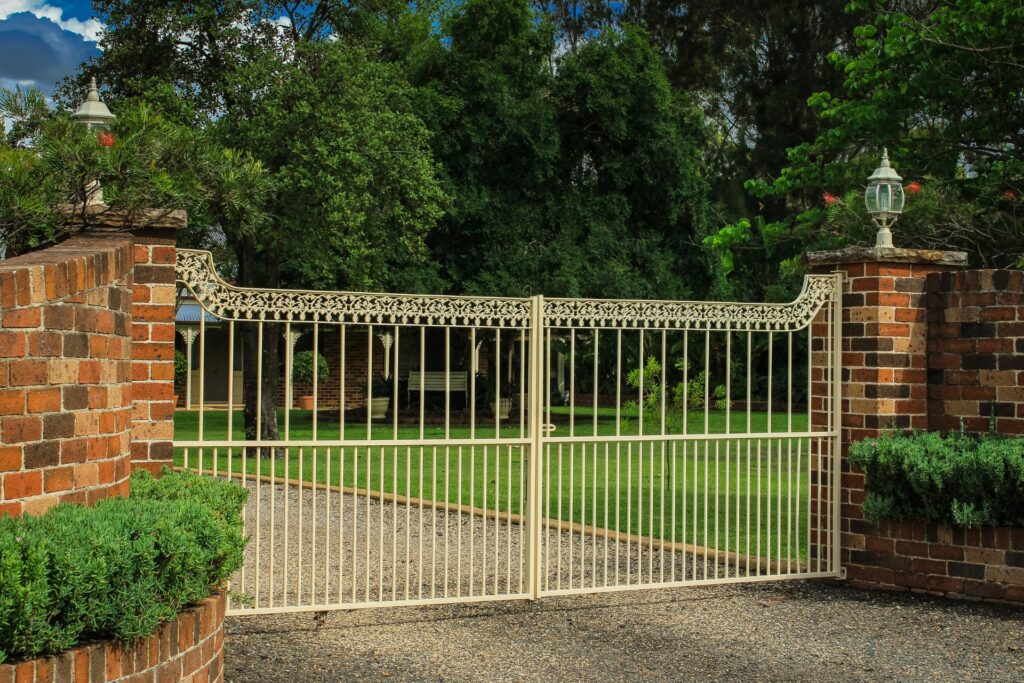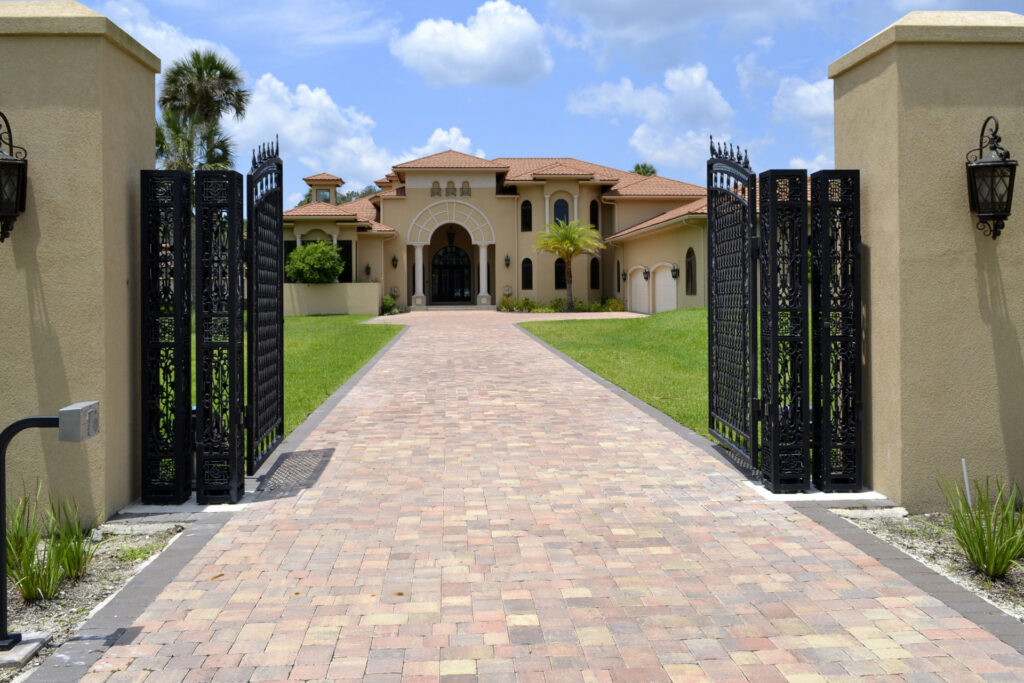Welcome to the ultimate guide on kitset homes in New Zealand, where affordability, style, and convenience come together to redefine modern living. As housing costs rise and the need for sustainable, efficient solutions grows, kitset homes are becoming a popular choice for Kiwis seeking customizable, cost-effective, and quick-to-build options. Whether you’re a first-time homebuyer, looking for a stylish holiday retreat, or exploring innovative ways to invest in property, kitset homes offer unmatched flexibility and value. In this blog, we’ll dive into everything you need to know about kitset homes in NZ, from their unique benefits and construction process to tips on choosing the perfect design for your needs.
Kitset homes in NZ are affordable, pre-designed houses delivered as flat-pack kits for easy assembly. These homes offer customizable designs, cost-effective construction, and quick build times, making them a popular choice for first-home buyers, holiday homes, and investment properties. With sustainable materials and adaptability to New Zealand’s unique climate, kitset homes are a practical solution for modern living.
- What Are Kitset Homes?
- Why Choose Kitset Homes In NZ?
- The Process Of Building A Kitset Home: Step-By-Step Guide
- Kitset Homes Vs. Traditional Homes: Key Comparisons
- Tips For Choosing The Right Kitset Home
- Common Myths About Kitset Homes
- Real-Life Success Stories: Kitset Homes In Action
- Potential Challenges And How To Overcome Them
- Cost Breakdown Of A Typical Kitset Home In NZ
- FAQs: About The Kitset Homes NZ
- Conclusion
- Find A Professional Tiny Homes Company Near You!
What Are Kitset Homes?
Kitset homes are a modern, affordable housing solution that has gained significant popularity in New Zealand due to their practicality and versatility. These homes are delivered as pre-packaged building kits, often referred to as flat-pack homes, containing all the materials needed to construct a fully functional house. Unlike traditional homes, which require extensive on-site labor and materials sourcing, or prefab homes, which are pre-assembled in a factory, kitset homes strike a balance by offering a mix of pre-manufactured components and on-site customization.
Definition And Concept
A kitset home is essentially a modular housing option designed for simplicity, efficiency, and affordability. The concept revolves around providing homeowners with a pre-designed package that includes all essential materials—such as timber framing, walls, roofing, and fittings—ready for assembly.
The standout feature of kitset homes is their modular nature. These homes are delivered in flat-pack form, meaning all parts are pre-measured, pre-cut, and carefully packed for easy transportation and on-site assembly. This approach eliminates much of the waste and unpredictability associated with traditional building methods. Homeowners can either choose to assemble the home themselves, following detailed instructions, or hire professional builders to complete the construction.
Key Features Of Kitset Homes
- Customizability In Design And Layout
Kitset homes are highly customizable, allowing homeowners to choose from a variety of designs and layouts to suit their specific needs. Whether you’re looking for a compact one-bedroom home or a spacious family house, kitset home providers in New Zealand offer numerous options to match your lifestyle and preferences. Many companies even provide customization options for finishes, materials, and design elements, ensuring a truly personalized home. - Quick Assembly And Cost-Effectiveness
One of the biggest advantages of kitset homes is their fast construction time. Since all materials are pre-prepared and ready for assembly, the building process is much quicker than traditional methods. In many cases, construction can be completed within weeks, significantly reducing labor costs and delays. Additionally, because kitset homes are designed to be efficient and use only the necessary materials, they are often more cost-effective than traditional builds. This makes them an attractive option for budget-conscious buyers. - Eco-Friendly And Sustainable
Many kitset homes use sustainable materials, such as New Zealand-grown timber, and are designed to minimize waste during production and assembly. This focus on sustainability not only benefits the environment but also reduces long-term maintenance costs for homeowners.
Suitability For Different Lifestyles
Kitset homes are incredibly versatile and cater to a wide range of lifestyles and purposes, making them an ideal choice for many New Zealanders. Here’s how they can fit into various needs.
- First-Home Buyers: Kitset homes are perfect for first-time homeowners looking for an affordable entry point into the property market. With lower construction costs and the ability to customize designs, they provide an excellent option for young families or individuals starting their homeownership journey.
- Holiday Homes: For those seeking a serene retreat, kitset homes offer an easy and affordable solution. Their customizable designs and quick assembly mean you can have a cozy holiday home in some of New Zealand’s most picturesque locations without breaking the bank.
- Investment Properties: Kitset homes are also a smart choice for investors looking to add rental properties to their portfolios. The lower upfront costs, combined with the growing demand for affordable housing, make them a lucrative option for generating rental income.
Kitset homes are a practical, cost-effective, and versatile housing solution that meets the needs of a diverse range of homeowners. Their modular nature, quick assembly, and adaptability make them a standout choice for first-home buyers, holiday home enthusiasts, and property investors alike. As New Zealanders continue to seek affordable and sustainable housing solutions, kitset homes are becoming a go-to option for modern living.

Why Choose Kitset Homes In NZ?
Kitset homes are quickly becoming a popular housing option for Kiwis due to their affordability, sustainability, customizability, and speedy construction process. Whether you’re looking for an affordable first home, a holiday retreat, or an investment property, kitset homes provide a smart and practical solution tailored to New Zealand’s unique lifestyle and housing needs. Here’s a closer look at why they’re worth considering.
Affordability
One of the main reasons people opt for kitset homes in New Zealand is their affordability. Compared to traditional builds, kitset homes significantly reduce overall costs by cutting down on materials and labor expenses.
The pre-cut and pre-measured materials included in kitset packages eliminate wastage, saving you money on unnecessary materials. Additionally, you have the flexibility to assemble the home yourself, further reducing labor costs. Even if you hire professional builders for the assembly, the shorter construction timeline often translates to lower labor expenses compared to traditional building projects. With rising housing costs in NZ, kitset homes offer a budget-friendly option for those seeking high-quality, long-term housing solutions.
Sustainability
Kitset homes also shine when it comes to sustainability, making them an eco-friendly choice for environmentally conscious homeowners. Many kitset homes in NZ are constructed using sustainable timber, which aligns with the country’s commitment to preserving natural resources. New Zealand has a strong timber industry that provides renewable and responsibly sourced materials, ensuring that your home has a lower environmental impact.
Moreover, kitset homes are often designed with energy efficiency in mind. Features like proper insulation, double-glazed windows, and energy-efficient layouts help reduce heating and cooling costs, making your home more environmentally friendly while saving you money in the long run. Choosing a kitset home means you’re contributing to a greener future without compromising on quality or comfort.
Customizability
Flexibility is another key advantage of kitset homes. Unlike cookie-cutter traditional builds, kitset homes offer you the freedom to design a space that perfectly suits your needs and preferences. From the layout and number of rooms to the finishes and materials, you have the power to create a home that reflects your lifestyle and personal taste.
Kitset homes are also highly adaptable to New Zealand’s diverse climates and terrains. Whether you’re building in a coastal region, rural countryside, or urban neighborhood, there are kitset designs available to meet the specific demands of your location. This level of customizability ensures that your home isn’t just functional but also aesthetically pleasing and perfectly suited to its environment.
Speed Of Construction
Time is a crucial factor when building a home, and kitset homes excel in this area. The streamlined construction process allows these homes to be built much faster than traditional builds, with minimal delays. Since the materials are pre-cut and pre-measured, much of the work is done before the kit even arrives at your site. This reduces the time needed for on-site construction and eliminates potential delays caused by weather or material shortages.
For homeowners eager to move in quickly, kitset homes are a fantastic option. Many builds can be completed in just a few weeks, depending on the complexity of the design and the experience of the builders. This fast construction timeline not only saves time but also reduces stress and allows you to start enjoying your new home sooner.
Choosing a kitset home in NZ means opting for an affordable, sustainable, customizable, and fast housing solution that meets the needs of modern living. With a wide range of designs, eco-friendly features, and the ability to save both time and money, kitset homes are an excellent choice for individuals and families looking to build a home that fits their lifestyle and budget. Explore the possibilities and experience the benefits of kitset homes for yourself.

The Process Of Building A Kitset Home: Step-By-Step Guide
Building a kitset home in New Zealand is an exciting and streamlined process that offers flexibility and efficiency. Whether you’re taking the DIY route or working with professionals, understanding the steps involved can make the journey smooth and enjoyable. Here’s a detailed, step-by-step breakdown of what to expect when building your dream kitset home.
Step 1: Choosing A Design
The first and most important step in building a kitset home is selecting the perfect design that meets your needs. New Zealand offers a wide variety of kitset home designs, ranging from compact studio layouts to expansive family homes. Key considerations when choosing a design include the size of your household, the intended purpose of the home (e.g., permanent residence, holiday retreat, or rental investment), and your budget.
Customizability is one of the biggest advantages of kitset homes. Many providers allow you to tailor layouts, choose materials, and even select eco-friendly options to suit your preferences. It’s important to consider the orientation of the home to maximize natural light and ventilation, especially in NZ’s diverse climate. With thoughtful planning, you can ensure your kitset home not only meets your needs but also aligns with your aesthetic vision.
Step 2: Securing Permits And Approvals
Before construction begins, you’ll need to secure the necessary permits and approvals to comply with local regulations and the New Zealand Building Code. This process may sound intimidating, but it’s simpler than you think if approached methodically.
Start by consulting your local council to understand specific zoning rules, land use restrictions, and consent requirements for your property. The building consent process ensures your kitset home meets safety and structural standards. Reputable kitset home providers often offer guidance and support with obtaining these permits, which can save you time and effort. Be sure to have detailed plans and specifications ready for submission, as these will be reviewed as part of the approval process.
Step 3: Delivery Of Materials
Once your design is finalized and permits are approved, the next step is the delivery of materials. One of the standout features of kitset homes is their efficient packaging. The components are carefully pre-measured, pre-cut, and organized for easy assembly, reducing the chance of errors during construction.
The materials are typically delivered to your site in flat-pack form, minimizing storage space requirements and making transport more cost-effective. Each kit comes with a detailed inventory and instructions, ensuring everything you need is included. Providers may also include a layout guide, hardware, and any special tools required for the assembly process. This level of precision and organization allows for a seamless transition from delivery to construction.
Step 4: Construction And Assembly
With materials on-site, it’s time to begin construction and assembly. One of the biggest appeals of kitset homes is their DIY potential. Many homeowners in New Zealand choose to assemble their kitset homes themselves, thanks to the user-friendly instructions provided by suppliers. These guides are typically detailed, with step-by-step visuals, making the process straightforward even for first-timers.
If DIY isn’t your style, you can hire professionals to handle the assembly. This option is still cost-effective compared to traditional construction, as the pre-cut components save time and labor. The modular nature of kitset homes means construction progresses quickly, often taking weeks rather than months. You’ll watch your home take shape in record time, with walls, floors, and roofs fitting together seamlessly.
Step 5: Final Touches And Moving In
After assembly, the focus shifts to final touches that turn your kitset house into a home. This includes installing utilities such as electricity, plumbing, and heating systems. You’ll also add interior finishes like flooring, cabinetry, and paint, as well as exterior elements like decking or patios.
Landscaping is another important step to enhance the overall appeal and functionality of your property. Whether you’re planting native flora or designing a low-maintenance outdoor space, landscaping adds value and character to your kitset home. Once these final touches are complete, your home is move-in ready, offering a personalized and satisfying living experience.
Building a kitset home in New Zealand is an exciting journey that combines affordability, efficiency, and customization. By following these steps—choosing a design, securing permits, managing materials delivery, assembling the structure, and adding the final touches—you’ll be well on your way to creating a home that perfectly suits your lifestyle. With proper planning and attention to detail, your kitset home can be both a smart investment and a space to cherish for years to come.
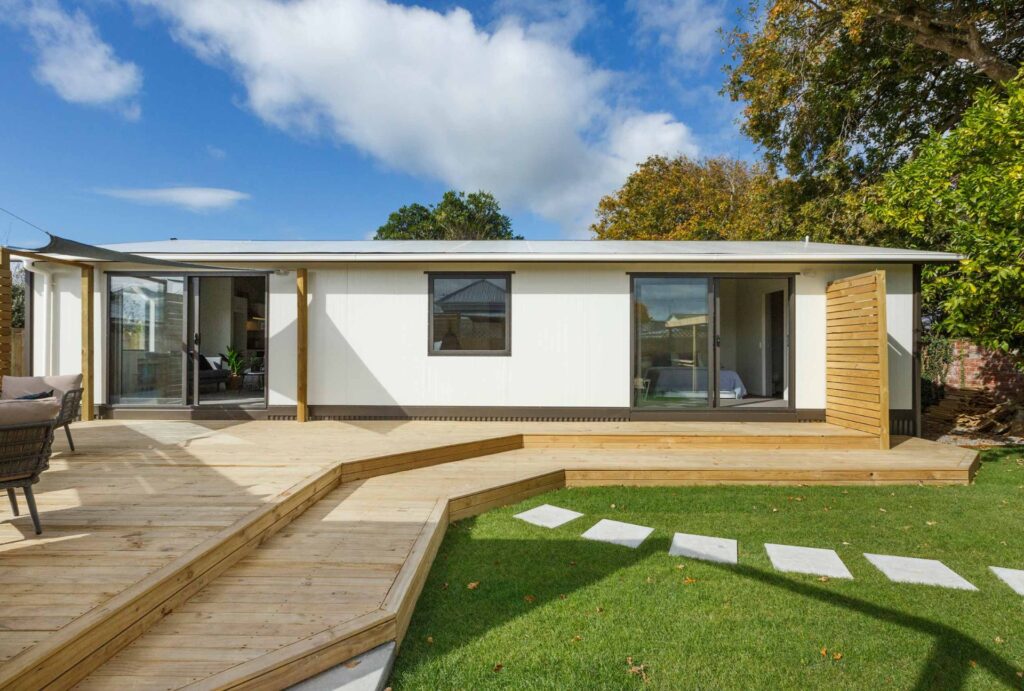
Kitset Homes Vs. Traditional Homes: Key Comparisons
When considering your options for building a home in New Zealand, it’s essential to weigh the differences between kitset homes and traditional homes. Each approach offers unique benefits, but they cater to different needs, budgets, and preferences. Below is a detailed comparison to help you make an informed decision.
Cost: Side-By-Side Cost Breakdown
One of the most significant differences between kitset homes and traditional homes is cost. Kitset homes are generally much more affordable, with prices typically ranging from $50,000 to $250,000, depending on size and design. Traditional homes, on the other hand, can cost upwards of $350,000 to $600,000 or more, depending on the complexity of the build and materials used.
The cost savings with kitset homes stem from their streamlined production process, which minimizes material waste and reduces labor expenses. With a kitset home, you can save on construction labor if you opt for DIY assembly or hire a smaller team of builders. Traditional homes, while offering a high degree of craftsmanship, often incur higher costs due to extensive labor, custom design work, and longer construction timelines.
- Bottom Line: If you’re budget-conscious and seeking an affordable solution, kitset homes are the clear winner. However, traditional homes may be worth the extra investment if you’re looking for highly customized luxury features.
Construction Time: Highlighting The Speed Advantage Of Kitset Homes
When it comes to construction time, kitset homes offer a significant advantage. Since the components of kitset homes are pre-cut, pre-measured, and delivered as a complete package, assembly is much faster than traditional builds. In most cases, a kitset home can be completed in a few weeks to a few months, depending on the design complexity and whether you opt for DIY or professional builders.
Traditional homes, however, typically take 6-12 months or longer to construct. Factors like weather delays, sourcing materials, and coordinating with multiple contractors can significantly extend the timeline. Kitset homes eliminate many of these variables by arriving as ready-to-assemble packages with clear instructions.
- Bottom Line: Kitset homes are the ideal choice if you’re looking for a quick, efficient housing solution. Traditional homes may require a longer timeline but allow for intricate customization and craftsmanship.
Customizability And Design Freedom
Both kitset homes and traditional homes offer customization options, but the approach differs significantly.
Kitset homes provide a balance between flexibility and efficiency. Many providers in New Zealand offer a wide range of pre-designed layouts, which can often be tailored to suit your needs. You can choose your floor plan, finishes, and features to match your lifestyle. However, the degree of customization may be somewhat limited compared to traditional homes, as kitset homes are designed for simplicity and ease of assembly.
Traditional homes, on the other hand, offer complete design freedom. From architectural details to interior layouts and materials, every aspect of a traditional home can be fully customized. This makes traditional homes ideal for those with specific design preferences or unique requirements. However, the extensive customization comes with higher costs and longer construction times.
- Bottom Line: Kitset homes are a great option for those seeking customizable yet straightforward designs. Traditional homes are perfect for individuals who want unlimited creative control and are willing to invest the time and money.
Maintenance And Longevity: Addressing Durability In NZ’s Climate
Kitset homes are designed to be durable and resilient, particularly for New Zealand’s varying climate conditions. Many kitset homes are constructed using sustainably sourced timber and other high-quality materials that are resistant to moisture, wind, and other environmental factors. Properly maintained, a kitset home can last for decades.
Traditional homes, due to their tailored construction and often higher-end materials, are also built to withstand New Zealand’s climate. However, the durability of both types of homes depends largely on the quality of the build and materials used.
When it comes to maintenance, kitset homes can be easier to manage since they are designed for simplicity and efficiency. Traditional homes, while often more intricate in design, may require more regular upkeep, especially for bespoke features like custom woodwork or stone finishes.
- Bottom Line: Both kitset and traditional homes can be highly durable, but kitset homes shine for those seeking low-maintenance living. Traditional homes may require more effort to maintain but can deliver long-lasting quality and visual appeal.
Choosing between kitset homes and traditional homes depends on your priorities. Kitset homes excel in affordability, quick construction, and low maintenance, making them a practical option for many Kiwis. Traditional homes, while costlier and more time-intensive, offer unmatched customization and craftsmanship for those with specific visions. By understanding the strengths of each, you can confidently choose the best option to suit your lifestyle, budget, and goals.

Tips For Choosing The Right Kitset Home
When it comes to building your dream kitset home in New Zealand, making the right choices is essential to ensure it meets your needs, budget, and lifestyle. Here are some practical tips to guide you through the process.
Define Your Needs
Before diving into designs or builders, take time to clearly define your needs. Consider your family size, lifestyle preferences, and long-term goals.
- Are you building a home for a growing family or a cozy retreat for two?
- Do you plan to use the home as a primary residence, a holiday home, or an investment property?
- Will you need additional rooms for hobbies, guests, or a home office?
Answering these questions will help narrow down your options and ensure the kitset home you choose aligns with your current and future requirements.
Research Builders
Finding a reputable builder or supplier is a critical step in the process. Look for companies with a strong track record and positive customer reviews. Some well-known kitset home providers in New Zealand include Fraemohs Homes, Kiwi Panel Homes, and Versatile.
- Visit their websites to browse their designs and see if they offer customization options.
- Check if they provide detailed assembly instructions or on-site support during construction.
- Ask for quotes and compare what’s included in the package—materials, delivery, and extra costs like permits.
It’s also a good idea to visit display homes or talk to previous customers to get a feel for the quality and reliability of their services.
Budget And Financing
Setting a realistic budget is essential when building a kitset home. While kitset homes are generally more affordable than traditional builds, there are still costs to consider beyond the base price.
- Start With A Clear Budget: Factor in not only the kitset package but also site preparation, council permits, utilities, and finishing touches like landscaping.
- Explore Financing Options: Some suppliers partner with lenders to offer tailored financing packages. Alternatively, you can speak to your bank or mortgage broker about construction loans.
- Plan For Contingencies: Set aside an additional 10-15% of your budget to cover unexpected expenses.
Being financially prepared ensures your project stays on track without unnecessary delays.
Consider Location And Land Requirements
The location of your kitset home plays a significant role in the design and build process. Consider the following factors when selecting land.
- Terrain: Is your land flat or sloped? Kitset homes can be adapted to suit different terrains, but steep sites may require additional preparation.
- Zoning Regulations: Check local council zoning rules to ensure your chosen design complies with building codes and land-use restrictions.
- Size And Orientation: Ensure the land is large enough to accommodate the home design you have in mind while leaving space for outdoor areas like gardens or driveways.
Careful evaluation of your location ensures a smoother construction process and maximizes the functionality of your new home.
Customization Options
One of the greatest advantages of kitset homes is the ability to customize them to suit your taste and needs. However, it’s important to strike a balance between personalization and practicality.
- Prioritize Essentials: Focus on features that add value and functionality, such as energy-efficient windows, durable materials, and ample storage.
- Stay Within Budget: Avoid over-customizing, as this can quickly escalate costs and lead to delays.
- Work With Professionals: Collaborate with the supplier’s design team to create a layout that suits your lifestyle while ensuring structural integrity.
By thoughtfully customizing your kitset home, you can create a space that is both beautiful and practical for years to come.
Choosing the right kitset home is about understanding your priorities, working with trusted suppliers, and carefully planning every step of the process. By defining your needs, researching reputable builders, setting a clear budget, and considering location and customization, you can create a home that perfectly fits your lifestyle and goals. Whether you’re building your first home or a relaxing getaway, these tips will help you navigate the journey with confidence.
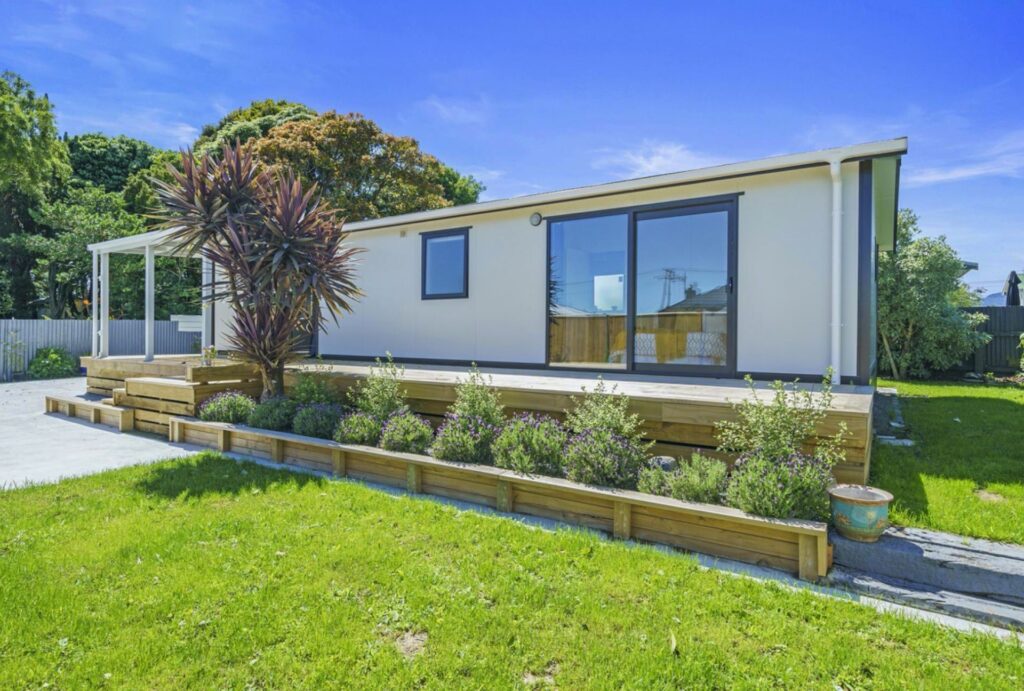
Common Myths About Kitset Homes
Kitset homes are gaining popularity in New Zealand for their affordability, sustainability, and efficiency. However, there are still some misconceptions that make people hesitate when considering this modern housing option. Let’s take a closer look at these common myths and debunk them with facts and insights that showcase why kitset homes are a fantastic choice for many Kiwis.
Myth 1: Kitset Homes Are “Cheap And Flimsy”
One of the most widespread myths about kitset homes is that they’re poorly constructed and lack durability. This couldn’t be further from the truth. Kitset homes in New Zealand are built using high-quality, sustainable materials that meet or exceed the standards of traditional homes.
In fact, many kitset homes use premium-grade timber sourced from NZ’s renowned forestry industry, which is both strong and environmentally friendly. These homes are designed to comply with the New Zealand Building Code, ensuring they can withstand the country’s unique climate, including heavy winds, earthquakes, and rain.
Additionally, advanced engineering and precision manufacturing ensure that each component of the home fits perfectly, providing structural integrity and longevity. Far from being “cheap,” kitset homes are an affordable yet reliable solution that doesn’t compromise on quality or safety.
Myth 2: Kitset Homes Look Boring And Generic
Another myth is that kitset homes are plain and uninspiring in design, often perceived as cookie-cutter houses with no individuality. However, modern kitset homes are anything but boring! They are now available in a wide range of architecturally inspired designs that can be customized to reflect your personal taste and style.
From sleek, contemporary layouts to cozy, traditional aesthetics, kitset homes can rival—and even surpass—the design appeal of conventional houses. Many providers in NZ offer extensive customization options, including choices for cladding, roofing, interior layouts, and finishes.
Kitset homes can also be tailored to suit unique lifestyles, such as creating an open-plan design for entertaining, adding eco-friendly features like solar panels, or incorporating large windows to maximize natural light. These stylish, modern designs make kitset homes stand out as a smart and beautiful housing solution.
Myth 3: DIY Assembly Is Too Hard For The Average Person
The idea of assembling a home might sound intimidating to some, leading to the myth that kitset homes are too complicated for the average person to build. However, this is a misconception that stems from misunderstanding the simplicity of the assembly process.
Kitset homes are specifically designed to be user-friendly, with detailed instructions and pre-measured, pre-cut materials provided in every package. Many homeowners find the process manageable, even if they have little to no construction experience. For those who prefer a hands-off approach, professional builders can be hired to assemble the home quickly and efficiently.
The flexibility of kitset homes means you can choose how involved you want to be in the process. Whether you’re tackling the project as a fun, hands-on experience or leaving it to experts, the result will be a high-quality, structurally sound home that’s ready to live in.
By debunking these myths, it’s clear that kitset homes are a practical, stylish, and durable option for housing in New Zealand. They are far from flimsy, offer modern and customizable designs, and provide a simple assembly process that caters to all levels of expertise. For anyone looking to build an affordable yet high-quality home, kitset homes remain an outstanding choice that combines innovation with functionality.

Real-Life Success Stories: Kitset Homes In Action
Kitset homes are transforming lives across New Zealand, offering a perfect blend of affordability, efficiency, and modern living. To truly understand the impact of these homes, let’s take a look at two inspiring success stories of families who embraced kitset homes and achieved their dream of owning a house.
A Young Couple’s First Home Journey
Emma and James, a young couple from Hamilton, were struggling to enter the housing market due to skyrocketing property prices. Determined to find an affordable solution, they discovered kitset homes as a viable alternative to traditional builds. After extensive research, they chose a three-bedroom kitset home design from a reputable NZ supplier.
With the support of a professional builder and their own DIY contributions, the entire assembly process took just three months—far quicker than a conventional build. By opting for a kitset home, Emma and James managed to save over 30% on construction costs compared to traditional housing. They were able to personalize their home with high-quality finishes and energy-efficient features while staying within their budget. Today, they are proud homeowners, enjoying a stylish, comfortable space that perfectly meets their needs.
Emma shared her experience: “Choosing a kitset home was the best decision we made. It was affordable, fast, and gave us the flexibility to create a home that truly reflects us. We couldn’t be happier!”
A Retiree’s Sustainable Holiday Retreat
John, a retiree from Christchurch, dreamed of owning a cozy holiday retreat near the Bay of Plenty. However, he wanted an eco-friendly and cost-effective solution that aligned with his retirement savings. Kitset homes offered him the perfect option.
John selected a two-bedroom design that emphasized sustainability, featuring solar panels, double-glazed windows, and sustainable timber. The home kit arrived pre-packaged with detailed instructions, and John chose to work with a small team of local builders to assemble it.
In just 10 weeks, his holiday home was complete—a tranquil retreat surrounded by nature. John was thrilled with the speed of construction and the ability to incorporate eco-friendly features without exceeding his budget. He now spends his days relaxing in a home that embodies simplicity and sustainability.
According to John: “The process was smooth, and the outcome was beyond my expectations. My kitset home is not only affordable but also environmentally conscious—everything I wanted for my holiday retreat.”
Why These Stories Matter
These real-life examples highlight the key benefits of kitset homes in New Zealand: affordability, quick construction timelines, and high customer satisfaction. Whether you’re a young couple stepping into the housing market or someone looking for a sustainable lifestyle, kitset homes prove to be a practical and rewarding choice. They allow you to save money, customize your dream space, and enjoy a home that meets your unique needs—all without the stress and delays often associated with traditional builds.
By choosing a kitset home, you’re not just building a house—you’re creating a future that is both achievable and inspiring, as seen in these success stories. Now is the perfect time to explore kitset homes and take the first step toward your dream home.

Potential Challenges And How To Overcome Them
While kitset homes in NZ offer incredible benefits such as affordability, quick construction, and customizability, there are a few potential challenges that homeowners may face during the process. Understanding these challenges and knowing how to address them can help you navigate the journey smoothly and ensure a positive experience. Let’s explore these challenges in detail and provide actionable tips to overcome them.
Logistical Challenges: Delivery To Remote Locations And How To Plan For It
One of the common concerns with kitset homes is the delivery of materials to remote or rural locations. Kitset home packages are typically pre-cut and flat-packed for ease of transport, but reaching areas with limited road access or difficult terrain can pose logistical hurdles.
How To Overcome It
- Plan Ahead: Work closely with your kitset home supplier to discuss the specifics of your delivery location. Many companies are experienced in handling remote deliveries and can offer solutions.
- Hire Local Expertise: Consider hiring local transportation experts who understand the terrain and can assist with offloading and moving materials to your site.
- Prepare Your Site: Ensure the delivery area is accessible, with a clear and level space for offloading the materials. If necessary, invest in temporary road access or site preparation to facilitate delivery.
- Break Down Deliveries: For particularly hard-to-reach locations, ask if the materials can be delivered in smaller, more manageable loads.
By proactively addressing these logistical considerations, you can ensure a seamless delivery process, even in challenging locations.
Council Approvals: Navigating Bureaucracy
Another challenge in building a kitset home is securing the necessary council approvals and building consents. New Zealand has strict building codes and regulations to ensure the safety and quality of homes, and navigating this bureaucracy can sometimes feel overwhelming.
How To Overcome It
- Understand The Regulations: Familiarize yourself with the NZ Building Code and local council requirements. This will help you know what is expected and avoid unnecessary delays.
- Work With Your Supplier: Many kitset home providers offer assistance with council approvals. They can supply the required documentation, including plans and compliance reports, to streamline the process.
- Hire A Professional: If navigating the paperwork feels daunting, consider hiring a licensed builder or project manager with experience in dealing with council regulations. They can handle the application process on your behalf.
- Communicate With The Council: Build a relationship with your local council office. Clear and consistent communication can help resolve any questions or concerns quickly.
By staying informed and seeking expert help when needed, you can ensure your kitset home project meets all legal requirements without unnecessary stress.
DIY Assembly Difficulties: Tips For Troubleshooting Or Hiring Professional Help
Many homeowners are drawn to kitset homes for their DIY potential, but assembling a home—even with detailed instructions—can come with challenges, especially for those without construction experience.
How To Overcome It
- Follow Instructions Closely: Kitset home packages usually include comprehensive assembly guides. Take your time to read through the instructions thoroughly before starting.
- Invest In Tools And Training: Ensure you have the right tools for the job and consider taking a basic construction workshop or watching instructional videos to boost your confidence.
- Work With A Team: Assembling a kitset home is rarely a solo project. Recruit friends, family, or local contractors to assist you.
- Know When To Call Professionals: If you encounter significant challenges or are unsure about critical steps like plumbing, wiring, or structural assembly, don’t hesitate to hire professional builders or tradespeople. This can save time and prevent costly mistakes.
- Utilize Customer Support: Most kitset home providers offer customer support to guide you through the process. Don’t hesitate to reach out for assistance with troubleshooting or clarifications.
By approaching DIY assembly with preparation, teamwork, and a willingness to seek help when needed, you can successfully complete your kitset home project with minimal stress.
Although building a kitset home in NZ may come with logistical, regulatory, and assembly challenges, these obstacles can be easily managed with proper planning and support. By addressing these hurdles head-on, you’ll be well on your way to enjoying the benefits of an affordable, stylish, and personalized home. With a bit of preparation and the right mindset, the journey to building your kitset home can be as rewarding as the final result.
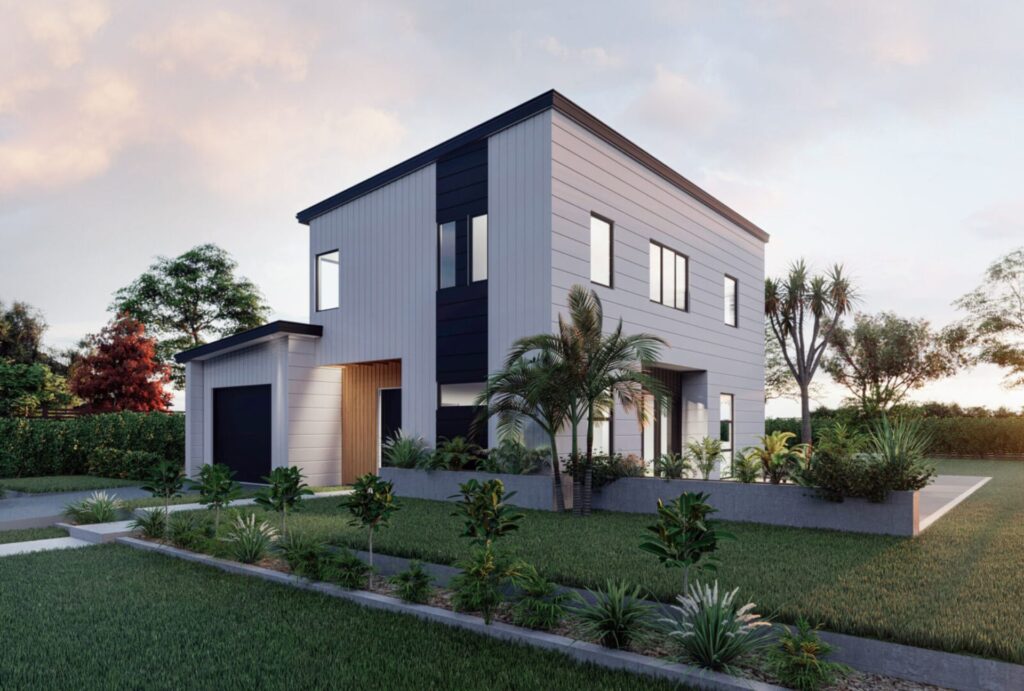
Cost Breakdown Of A Typical Kitset Home In NZ
Understanding the cost of building a kitset home in New Zealand is essential for anyone considering this affordable and flexible housing option. While kitset homes are known for their cost-effectiveness compared to traditional builds, there are several factors to consider when estimating your total expenses. Here’s a detailed breakdown of the main costs involved.
Material Costs: General Price Ranges For Kitset Packages
The material costs for a kitset home typically depend on the size, design, and level of customization. In New Zealand, basic kitset home packages can start from $50,000 for smaller, single-bedroom designs, while larger family-sized homes with three to four bedrooms can range from $100,000 to $250,000. These packages usually include pre-cut and pre-measured materials like framing, walls, roofing, and sometimes doors and windows.
Higher-end kits might come with additional features such as insulation, cladding, or energy-efficient components, which can raise the overall cost. However, the advantage of kitset homes is that you have control over the materials and finishes, allowing you to adjust the costs to fit your budget.
Additional Costs: Beyond The Kitset Package
While the kitset package covers the core materials for your home, there are several additional costs to consider to complete your build. These include.
- Land Purchase: The cost of land in NZ varies widely based on location. Urban areas and coastal regions tend to have higher land prices compared to rural areas.
- Site Preparation: This involves clearing the land, leveling it, and laying the foundation. Depending on the complexity of the site, this can cost anywhere between $10,000 to $30,000 or more.
- Council Permits And Consents: Building a kitset home requires compliance with local council regulations and the NZ Building Code. Building consent fees generally range from $2,000 to $5,000, depending on your location and the scope of the project.
- Utilities: Connecting essential services such as water, electricity, and sewage to your home can add another $5,000 to $15,000 to the overall cost.
- Labor Costs: If you’re not building the home yourself, hiring professionals for construction can cost anywhere from $20,000 to $50,000, depending on the complexity of the design and the duration of the build.
When budgeting for a kitset home, it’s important to account for these additional expenses to avoid surprises during the construction process.
Compare To Traditional Builds: Cost Savings For Budget-Conscious Buyers
One of the biggest advantages of kitset homes is their affordability compared to traditional builds. In New Zealand, the average cost of building a traditional home can range from $3,000 to $4,500 per square meter, which translates to $300,000 to $450,000 or more for a standard three-bedroom home.
In contrast, kitset homes can reduce these costs significantly, with some estimates showing savings of up to 30-50% on the total build. These savings come primarily from.
- Lower Material Costs: Kitset homes are pre-fabricated, which reduces waste and labor during manufacturing.
- Reduced Labor Costs: With many components pre-cut and ready to assemble, construction times are shorter, resulting in lower labor expenses.
- DIY Potential: For those with building experience, the DIY nature of kitset homes can eliminate labor costs altogether, maximizing savings.
While kitset homes may not include all the luxury features of a custom-built traditional home, they provide an affordable, high-quality alternative for budget-conscious buyers. With proper planning, you can create a stylish and functional home that suits your needs while staying within your budget.
The cost breakdown of a kitset home in NZ highlights its appeal as an affordable and flexible housing solution. While the upfront price of the kitset package is a major advantage, it’s crucial to factor in additional costs like land, permits, and utilities to get a clear picture of your total investment. Compared to traditional builds, kitset homes offer significant cost savings, making them an excellent option for first-time homebuyers, families, and anyone looking to embrace modern, sustainable living. With proper budgeting and research, you can create your dream home at a fraction of the price of conventional construction methods.

FAQs: About The Kitset Homes NZ
Conclusion
Deciding whether a kitset home is the right choice ultimately depends on your needs, budget, and lifestyle, but the benefits are hard to ignore. Kitset homes in New Zealand offer an affordable solution to rising housing costs, with the added advantage of being highly customizable to suit your personal preferences and living requirements. Their efficient construction process saves time without compromising on quality, making them an ideal option for first-home buyers, holiday homes, or investment properties. If you’re considering this innovative housing option, take the first steps by researching available designs, exploring pricing, and reaching out to reputable NZ kitset home providers for more information. By doing so, you can gain a clearer understanding of how a kitset home can fit into your vision for the perfect home. With their proven durability, modern designs, and ability to adapt to New Zealand’s unique environment, kitset homes provide a practical, stylish, and cost-effective solution to meet your housing goals. Take the leap with confidence, knowing you’re making an informed and rewarding choice.
Find A Professional Tiny Homes Company Near You!
- Tiny Homes Auckland
- Relocatable Homes Auckland
- Prefab Homes Auckland
- Portable Cabins & Cottages Auckland
- Modular Homes Auckland
- Relocatable Homes Christchurch
- Portable Cabins & Cottages Christchurch
- Modular Homes Christchurch
- Prefab Homes Christchurch
- Tiny Homes Wellington
About the Author:
Mike Veail is a recognized digital marketing expert with over 6 years of experience in helping tradespeople and small businesses thrive online. A former quantity surveyor, Mike combines deep industry knowledge with hands-on expertise in SEO and Google Ads. His marketing strategies are tailored to the specific needs of the trades sector, helping businesses increase visibility and generate more leads through proven, ethical methods.
Mike has successfully partnered with numerous companies, establishing a track record of delivering measurable results. His work has been featured across various platforms that showcase his expertise in lead generation and online marketing for the trades sector.
Learn more about Mike's experience and services at https://theleadguy.online or follow him on social media:

